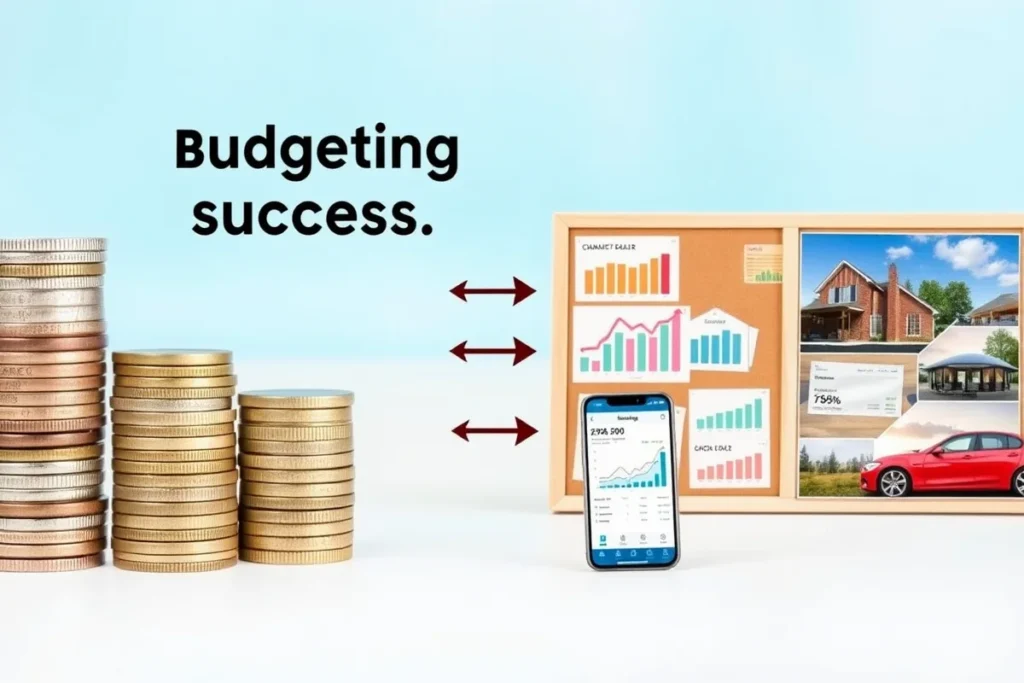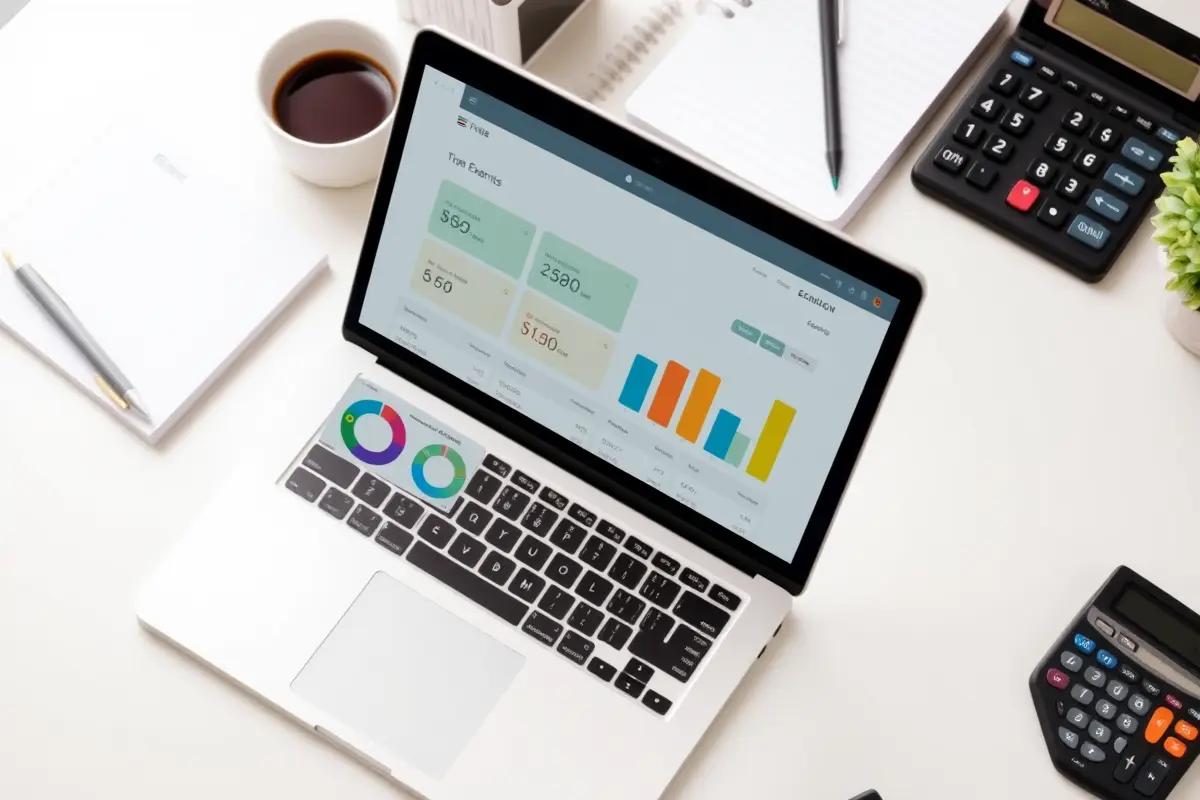When I first discovered MyFinance, I was overwhelmed with the sheer amount of budgeting apps and tools available. Yet, after a few frustrating attempts at creating a budget, I found a method that truly resonated with me. Let me take you through my budgeting journey and how MyFinance became my ultimate financial companion.
The Importance of Creating a Personal Budget
Creating a personal budget is one of the most impactful steps we can take for our financial health. It’s an essential skill that can lead to clarity and confidence in our financial situation. But what exactly is a budget? It’s a plan that outlines how much money we have coming in, versus how much we have going out. It’s like a roadmap for our finances.
Understanding the Basics of a Personal Budget
At its core, a personal budget helps us keep track of our income and expenses. It highlights our spending habits and allows us to see where we might be overspending. Here are a few basic components of a personal budget:
- Income: This is all the money that comes in, including wages, bonuses, and side hustles.
- Expenses: These are categorized into fixed (like rent) and variable expenses (like dining out).
- Savings: This is the amount we set aside for emergencies or future investments.
Setting Realistic Financial Goals
Once we understand the basics, we can set realistic financial goals. This can include saving for a vacation, a home, or even retirement. Realistic goals are specific and measurable. For example, instead of saying, “I want to save more money,” I can say, “I will save $200 a month.” This type of clear goal gives us a target to aim for.
The Psychological Benefits of Budgeting
It might surprise you to know that budgeting isn’t just about numbers. It can also have significant psychological benefits. According to a 2021 survey, 65% of budgeters felt less stressed about money. Having a plan gives us a sense of control. It can also improve our overall mood. After all, wouldn’t it be nice to know exactly where our money is going? “A budget is telling your money where to go instead of wondering where it went.” – John C. Maxwell.
How Budgeting Can Prevent Financial Stress
When we budget effectively, we can prevent financial stress. If unexpected expenses arise, like a car repair, we’re better prepared. We can pull from our savings without panic. Plus, budget-focused individuals save on average 20% more than non-budgeters. That’s a significant difference!
My Experience with Budgeting
My first experience with budgeting taught me the sheer relief that comes from knowing my finances inside and out. Before budgeting, I felt like I was constantly treading water. I had no idea where my money was going, and that uncertainty caused significant stress. But once I began to budget, everything changed. I had a plan. I had knowledge. I felt empowered.
Consider giving budgeting a try. It might just transform your relationship with money.
| Aspect | Percentage |
|---|---|
| Budgeters feeling less stressed | 65% |
| Average savings increase | 20% |
Getting Started with MyFinance
When I first set up MyFinance, it felt like I was holding the keys to a treasure chest of control over my spending. The interface is user-friendly and designed for everyone, whether you’re a beginner or a seasoned budgeter. Let’s dive into how to navigate this tool effectively.
Navigating the MyFinance Interface
The first step is to get familiar with the MyFinance dashboard. Here are some elements you’ll encounter:
- Main Menu: This gives you access to all features like budgets, reports, and settings.
- Quick Add: Easily input expenses or income from any page.
- Reports: Visualize your spending data through charts.
Setting Up Your First Budget

Next, let’s set up that first budget. It’s simpler than you might think:
- Create categories: Think of essentials like groceries, utilities, and entertainment.
- Input your expected income: Be realistic. Don’t count on surprises.
- Allocate amounts: Assign a portion of your income to each category. Aim for balance!
Pro tip: Start with smaller amounts to avoid feeling overwhelmed.
Tips for Inputting Expenses Accurately
Accuracy is key to budgeting success. Here are a few tips:
- Record expenses immediately to avoid forgetting.
- Categorize each expense as soon as you can.
- Use descriptive labels to remind yourself of each purchase later.
Utilizing Alerts and Reminders
Want to stay on track? Set alerts. MyFinance offers reminders for bills, budget limits, and more. This keeps you focused and reduces the anxiety of unexpected expenses.
User Feedback
Users have shared incredible experiences with MyFinance. As Sarah J. Smith said:
“MyFinance has transformed my financial chaos into clarity.”
Such testimonials show that real people can achieve their budgeting goals using this tool.
Data Insights
For those skeptical about budgeting apps, here’s a significant statistic:
| Users Report | Budgeting Efficiency Increase |
|---|---|
| Using MyFinance for Three Months | 30% |
This data speaks volumes. Not only can you manage your finances better, but you can also see tangible results in just three months!
Remember, your financial journey is unique. It’s about finding the right balance and tools that work for you. Dive into MyFinance, and embrace the clarity and control it provides.
Personalizing Your Budget Template
When it comes to budgeting, one size definitely does not fit all. Each person’s financial situation is unique, which is why it’s crucial to personalize your budget template.
1. Identifying Your Income Sources
First things first: it’s essential to know where your money is coming from. Are you earning through a full-time job, freelancing, or perhaps side gigs? Make a list of all your income sources. This sounds simple, but it’s often the first step in creating your own budget. Think about:
- Your primary job
- Any part-time jobs
- Passive income streams, like investments
By being clear on your income, you set a solid foundation for your budget.
2. Categorizing Expenses That Matter to You
Next, let’s tackle expenses. What is essential for your lifestyle? This varies from person to person. For me, it’s crucial to account for necessities like rent and groceries, but I also need to include my love for fast food.
Yes, budgeting for takeouts helps me stay motivated! Think about your essentials, then categorize them:
- Fixed expenses (rent, bills)
- Variable expenses (groceries, entertainment)
- Fun expenses (dining out, hobbies)
3. Using Templates to Streamline Budgeting
Templates can be lifesavers. They save time and help maintain organization in your finances. There are plenty of customizable templates online that cater to different needs. You can even create one from scratch or tailor a free one to suit your unique situation.
4. Revisiting and Adjusting Your Budget Regularly
Lastly, budgets are not meant to be static. Just like I adjust my fast food budget when I decide to be healthier, we all need to revisit our financial plans regularly. Whether it’s once a month or quarterly, check how well your budget reflects your needs. Are your priorities changing? Update your budget accordingly.
“A budget is not a restriction, it’s a roadmap to your financial goals.” – Unknown
By personalizing your budget, you not only increase your chances of sticking to it, but you also align it with your lifestyle. According to studies, 44% of people adhere to their budgets when they reflect personal needs. So think outside the box, experiment with various approaches, and find what truly works for you.
In my experience, customization became key to my success, leading me to financial freedom. Your personal journey may differ, but the principles remain the same!
Common Budgeting Mistakes and How to Avoid Them
Budgeting can feel overwhelming. Many of us think we’ve got it figured out, but mistakes lurk just around the corner. Let’s explore some common budgeting blunders and how we can steer clear of them.
1. Ignoring Unexpected Expenses
Have you ever had to replace your car’s tires unexpectedly or deal with a sudden medical bill? Ignoring unexpected expenses is a common mistake. On average, people forget to budget for at least three major expenses a year. It’s easy to think everything will go according to plan, but life has its twists. A great way to tackle this issue is to create a cushion in your budget.
2. Setting Unrealistic Goals
We all want to be debt-free, but setting feasible goals is crucial. This doesn’t mean you shouldn’t aim high, but instead of aiming for perfection, focus on progress. Setting unrealistic goals might lead to frustration and demotivation. Have you tried breaking down large objectives into smaller, achievable steps?
3. Neglecting to Track Spending Regularly
Think of your budget as a map. Without tracking your spending, it’s like driving without a destination. How can you adjust if you don’t know where the money is going? Regular tracking can reveal spending habits that you didn’t even notice.
4. Failing to Adjust Budgets Based on Changes
Life is dynamic. Your budget should be too. Whether you got a raise or experienced a new expense, failing to adjust budgets can leave you in a bind. Keep checking in with your budget regularly and tweak as needed.
“Mistakes are proof that you are trying.” – Jennifer Lim
In my budgeting journey, I once overlooked unexpected expenses, and it almost derailed my efforts. I’ve learned the hard way about the importance of cushion space in my budget. Every mistake is a learning opportunity—let’s embrace them!
Celebrating Your Budgeting Success

Have you ever experienced that rush of joy when you meet a financial goal? I definitely have! It’s an *incredible feeling*. It makes the effort worthwhile. Celebrating your budgeting success isn’t just about the money; it’s about the journey you took to get there. Let’s explore how tracking progress, establishing new goals, and engaging with others can amplify your success.
1. Tracking Progress Over Time
Keeping track of your financial progress is essential. It helps you *view where you started* and how far you’ve come. When I look back at my budgeting journey, each tiny step added up. Just like a marathon runner who counts every mile, tracking your financial milestones keeps you motivated. Make a habit of checking your budget regularly. It’s fulfilling to notice your growth!
2. Setting New Financial Goals
Once you achieve one goal, what’s next? Setting new financial goals can serve as a *motivational driver*. It adds excitement to your budgeting journey. Imagine hitting that first savings target. What comes next? Investing in a new skill? Saving for a trip? It’s crucial to think ahead and create actionable goals.
3. Understanding the Emotional Uplift of Milestones
Financial success is more than numbers. It brings happiness and *emotional satisfaction*. Each milestone acts as a reminder of your commitment. As Robert Collier said, “
Success is the sum of small efforts, repeated day in and day out.
” Celebrate those small wins! Enjoy that feeling. It will propel you further along your financial journey.
4. Engaging with Community Resources for Motivation
Never underestimate the power of a support system. Whether it’s family or online forums, connecting with others makes a difference. Sharing your .success stories inspires others and in return inspires you. Remember, you are not alone in this journey!
Surveys indicate that 70% of people feel positively about their financial future when engaging in budgeting successfully. So, let’s take those strides together!
As I think back to my first savings goal, the joy was immense. It *motivated me deeply* to keep striving. Your financial journey can be rewarding and successful. Embrace each moment, track your progress, cheer for your milestones, and connect with others for support. Your budgeting success is a celebration worth having!
TL;DR: Creating a budget with MyFinance can simplify your personal finance, help you set goals, and encourage disciplined spending. With real-life examples and useful tips, you too can achieve financial stability.




